Grade Level
6 - 8
minutes
45 to 90 minutes
subject
Engineering and Tech
stem practices
Asking Questions and Defining Problems, Developing and Using Models
Activity Type:
Engineering design challenge, robotics, space, After School Activity
Ever wish you could have help completing a task? Maybe you need to move big boxes around or build a piece of furniture in your room. Someday in the near future, a robot might be the answer. It already is for astronauts. On the International Space Station (ISS), robots help astronauts by doing a lot of repetitive tasks that are necessary but might be boring, challenging, or dangerous for astronauts. Robot helpers for individuals are great, but what if you thought bigger? How would you use robots to improve your community?
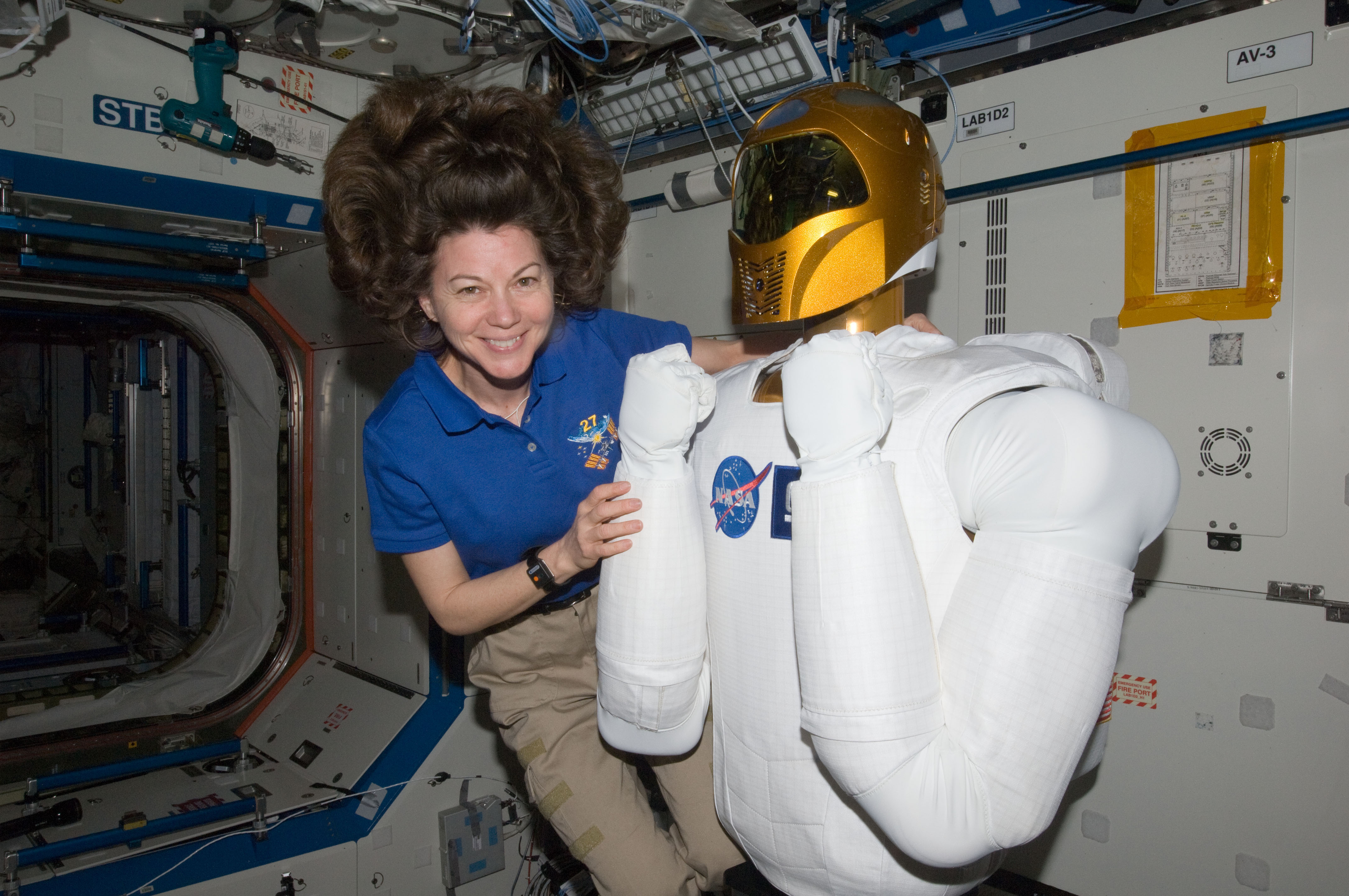
Robot Helpers In Space
While you may not have a robot to help you, astronauts do. On the ISS, astronauts have several different robot helpers that make life easier in space. There’s the humanoid Robonaut that can manipulate tools, like a screwdriver, almost as easily as a human can. Astrobees are flying robots that perform routine tasks such as taking inventory and moving boxes around the space station. The Canadarm, on the outside of the ISS, allows astronauts to dock spacecraft safely and can even give them a lift during their space walks.
When robots perform these jobs, it’s more efficient, cost-effective, and, most importantly, safer for the astronauts.
Robot Helpers On Earth
Robots that are useful in space could also be great helpers on Earth. Today, there are robots that vacuum the house, cut lawns, even fold clothes. But they can do so much more. Did you know that robots help combat climate change?
Charge Robotics has a robot arm that assembles solar panels. Skygrow has developed a “Growbot” that helps to plant trees, which when grown, will help remove carbon dioxide from the atmosphere. Meanwhile, Aerones uses robotic arms to maintain wind turbine blades and towers, helping to make energy production efficient while keeping technicians safe.
Robots aid in the development of more sustainable communities. They help clean up pollution, install renewable energy systems, and even make manufacturing processes more environmentally friendly.
How Does The Robot Get Its Moves?
Designing a robot is really fun, but before taking on a complex machine like Robonaut, engineers often explore smaller, more specific mechanisms. For example, grabbing objects may seem simple to you, but robotic arms don’t have the same dexterity that human hands possess. In fact, most robotic arms may not have hands at all. Robotic arms can sometimes work autonomously, or by themselves, like those on a car assembly line. But those movements are very limited so that the robot only does specific tasks. That method isn’t the best for every situation. For a greater range of motion, humans need to control robotic arms using joysticks connected to computers.
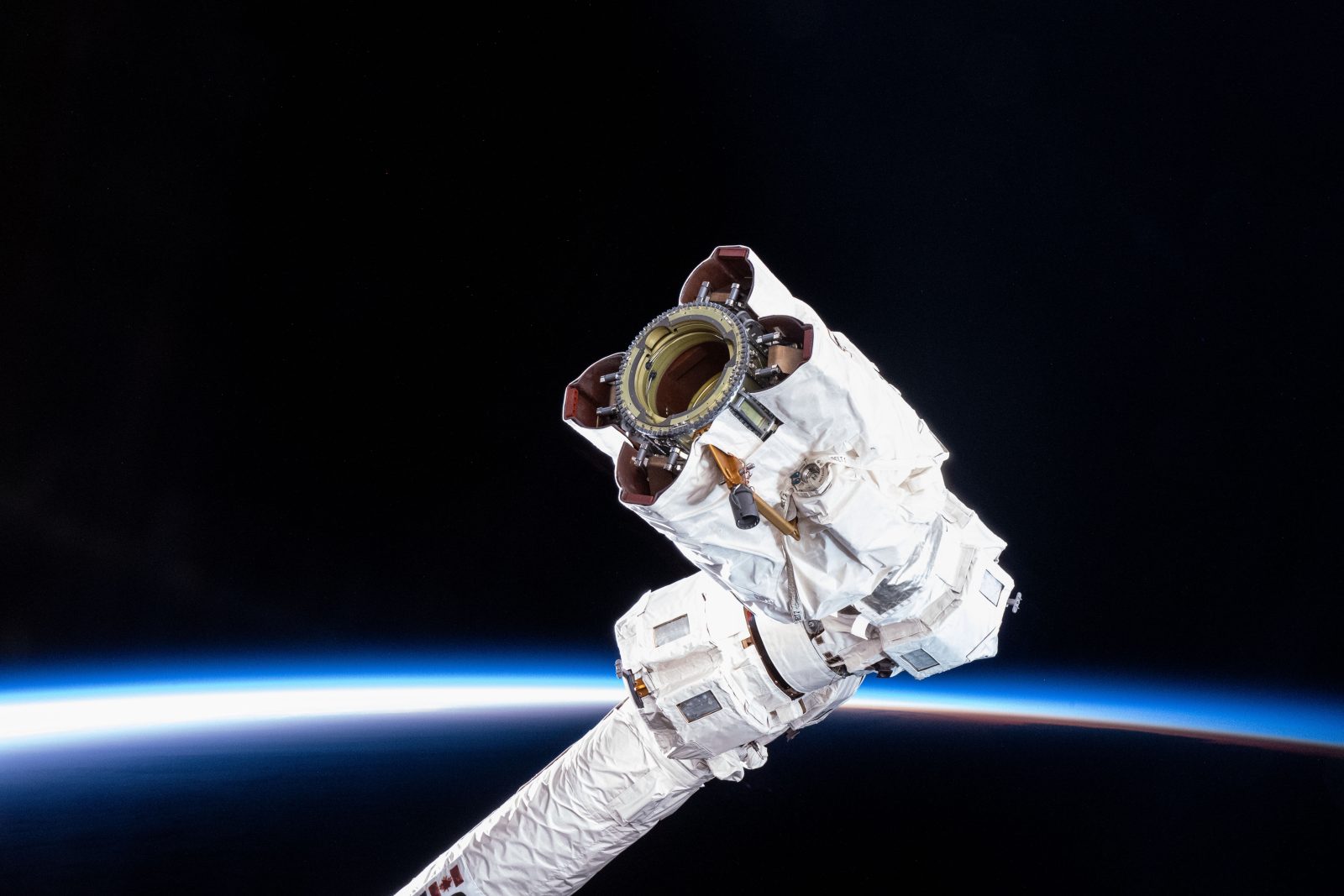
Robotic arms can sometimes work autonomously, or by themselves, like those on a car assembly line. But those movements are very limited so that the robot only does specific tasks. That method isn’t the best for every situation. For a greater range of motion, humans need to control robotic arms using joysticks connected to computers.
Some robotic arms, like the one on the ISS, have cameras mounted on their exterior to allow astronauts to maneuver the arms into the proper place. Controlling the arms on the ISS is not a one-person job. It requires tremendous training and teamwork.
How Do You Maneuver A Robotic Arm?
This simple activity will help you to understand how complicated it is for a robot to grab an object, pick it up, and put it down gently in a new place. You’ll make a simple grabber and then work with a team to move objects. It’s not as easy as you think to “work like a robot.”
Materials:
- One large rubber band (#33; 3 ½” x ⅛”) or another stretchy material (Get creative!)
- Four pieces of string, 6 inches to feet each (depending on the level of challenge desired; longer strings increase difficulty)
- Six 16-ounce plastic cups; more for additional challenges (optional)
- Up to three friends, classmates, or family members
- Goggles or other eye protection
- Cup Tower Challenge Handout (optional)
Cup Tower Challenge:
- Attach the strings to your rubber band. How you attach the strings and where on the rubber band you attach them is up to you. Take a moment to discuss your plan with your team.
- Stack all the cups together in one column.
- Then, move all six cups from the column into a pyramid shape (with three on the bottom, two on the second row, and one on top) without touching the cups with your hands.
CAUTION: Eye protection is suggested when using rubber bands.
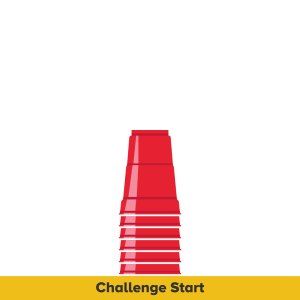
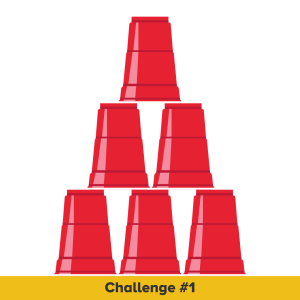
Extending The Cup Tower Challenge:
- Want to make it harder? Add additional criteria to your challenge.
– Only allow team members to use one hand.
– Do not allow anyone on the team to speak.
– Add a time limit of five minutes (or less).
– Increase the number of cups to stack. - Want to make it easier? Give your team these advantages.
– Start with all the cups spread out on your surface rather than stacked.
– Practice picking up a cup with the grabber before starting the challenge.
– Reduce the number of cups to stack. - Once you’ve mastered the first challenge, try to unstack the cups and put them back into a single column. You can also mix it up and try building different shapes. Get creative!
After you’ve completed the challenge, consider these questions:
- How did this activity help you to understand the ways humans may interact with a robot?
- What did you learn about having to work together as a team?
- How would you redesign your grabber to use a screwdriver or hammer a nail?
Our Future With Robots
You’ve looked at just a few of the robots being used in space and on Earth. There are so many more out there. Robots are more than just helpers. They can also interact with humans to keep things running smoothly. Thinking about ways robots can help you improve your community or make your Earth a better place is key.
Here are three ideas for you to consider. How might you design a robotic arm that can be remotely controlled by humans at a safe distance to address each problem? Use the Mission Tech Force Design Challenge Journal to plan, prototype, and test your robotic arm using materials in your house, like scrap cardboard, recycled plastic containers, and craft supplies.
- Imagine you work for the Federal Emergency Management Agency (FEMA) and need to assist communities in removing debris after natural disasters such as hurricanes, tornadoes, and floods. What kind of robotic arm could help you do that?
- Suppose you’re a civil engineer working for your state’s transportation department. How could you use robotics to build or upgrade bridges, roads, or buildings to make your community more sustainable and resilient to climate change and natural disasters?
- What if you’re a project manager for a small manufacturing company? How might a robot help you reduce the energy your company’s factory uses or the carbon dioxide emissions it creates? Or how could robotics be used to keep employees safe?
Whatever you choose to design, know that robots are best when they aid with repetitive chores that are tiring, time-consuming, and boring. Robots can help free up humans for other work while helping reduce climate change because they use less energy. What ideas do you have for a robot?
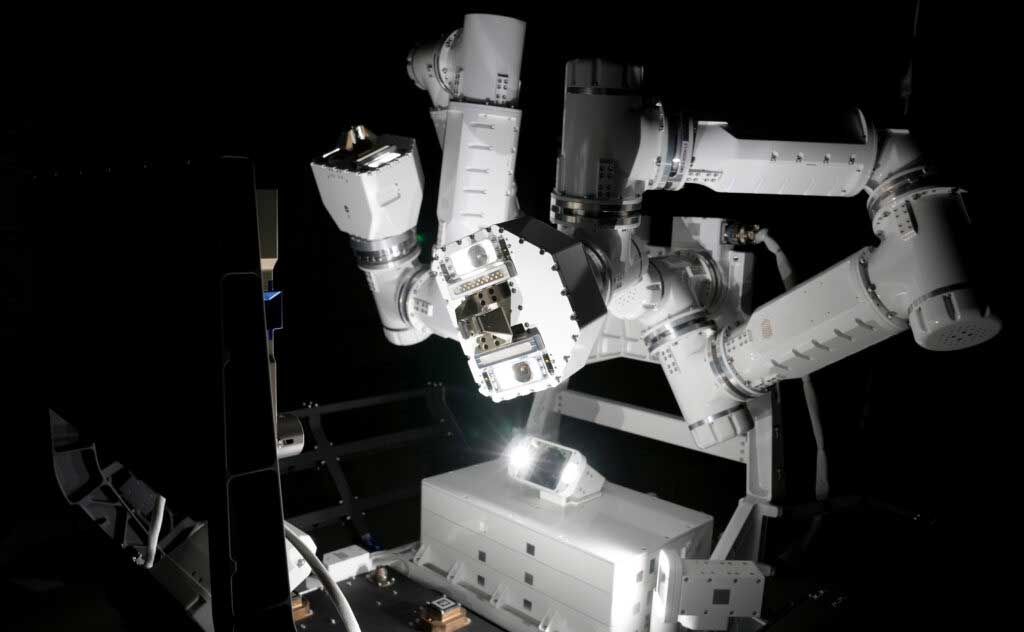
When you’ve planned your solution, share it! Post your filter prototype in the Down To Earth Community Lab so others can learn from your idea. Share a photo, and we’ll include it HERE for everyone to see!
Note: Ask your adult before sharing your prototype. Be sure to remove any identifying information.
Want To Learn More?
Excited by the possibilities for robotics? Discover other ways this technology is changing the world!
- You don’t need complex equipment and expensive technology to learn to build robots. Science Buddies has more than 25 activities to get you started and build your engineering skills.
- As humans build and use robots more frequently, there are some big questions to consider. What if you treated robots like you treat your pets? Should humans or robots be involved in space exploration? Should robots colonize the moon or Mars? Listen to the stories and use a graphic organizer to take notes, then share your thoughts with others.
- Sure, robots are cool, but they rely on the mechanics of simple machines to function. Discover the math behind the mechanical advantage of robotic arms.
- Want to go above and beyond—literally? You can control soccer ball–sized robots called Synchronized Position Engage Reorient Experimental Satellites (SPHERES) on the ISS as part of the Zero Robotics programming competition.
NGSS Standards
- MS-ETS1-1: Engineering Design – Define the criteria and constraints of a design problem with sufficient precision to ensure a successful solution, taking into account relevant scientific principles and potential impacts on people and the natural environment that may limit possible solutions.
- MS-ETS1-2: Engineering Design – Evaluate competing design solutions using a systematic process to determine how well they meet the criteria and constraints of the problem.
- MS-ETS1-3: Engineering Design – Analyze data from tests to determine similarities and differences among several design solutions to identify the best characteristics of each that can be combined into a new solution to better meet the criteria for success.
- MS-ETS1-4: Engineering Design – Develop a model to generate data for iterative testing and modification of a proposed object, tool, or process such that an optimal design can be achieved.
Career And Technical Education Career Clusters
- Supply Chain & Transportation: This career cluster encompasses the transfer, coordination, and management of goods from production to consumption, ensuring efficient movement across various modes of transportation including air, ground, and water, as well as maintenance of the respective transport modes.
- Manufacturing: This career cluster is focused on planning, managing, and performing the processing of materials into intermediate or final products and related professional and technical support activities such as production planning and control, maintenance and manufacturing, and process engineering.
- Science, Technology, Engineering & Mathematics: This career cluster is focused on planning, managing, and providing scientific research and professional and technical services (e.g., physical science, social science, engineering), including laboratory and testing services, and research and development services.
UN Sustainable Development Goals
Industry, Innovation, and Infrastructure: Goal 9 aims to build resilient infrastructure, promote inclusive and sustainable industrialization, and foster innovation.
Credits:
Lesson by Jennifer Swanson
Copyediting by Erica Williams
Digital Production by Sandy Roberts

Special thanks to the ISS National Laboratory and the Center for Advancement of Science in Space™ (CASIS™) for funding this resource. Working together with NASA, the ISS National Lab aims to leverage the space station to inspire the next generation.
This resource is part of Science Friday’s Down To Earth: Space Science For Community Change program.
Educator's Toolbox
Meet the Writer
About Jennifer Swanson
Jennifer Swanson is an educator, children’s book author, and the creator and cohost of the Solve It! for Kids science podcast. She’s based in Jacksonville, Florida.
